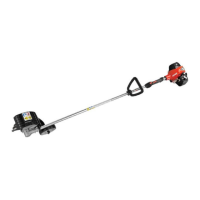Why is my Echo BRD-2620 engine hard to start or not starting?
- TTony RoseJul 28, 2025
If your Echo Power Tool engine starts hard or doesn't start at all, several factors could be at play. It might be due to the stop switch being in the OFF position, an electrical problem, or an issue with the interlock switch; in this case, turn the switch to ON or see your dealer. Other potential causes include a fuel mixture that's too rich, which can be resolved by opening the choke, cleaning or replacing the air filter, or adjusting the carburetor (or see your dealer). Also, the fuel strainer or fuel line could be obstructed, requiring cleaning or replacement (or see your dealer). Finally, inspect the spark plug for incorrect gap, carbon buildup, fuel fouling, or defects; adjust the gap to 0.65mm (0.026 in.) or clean/replace the plug as needed.


